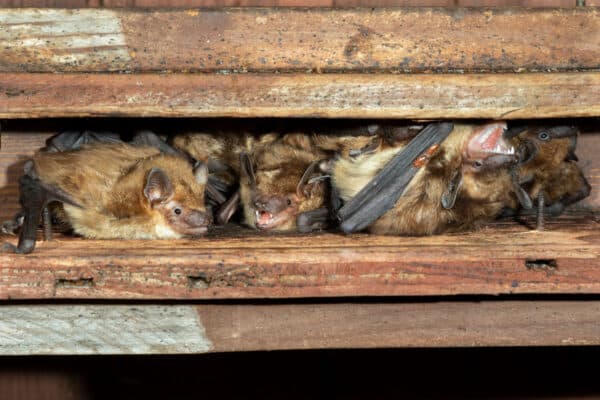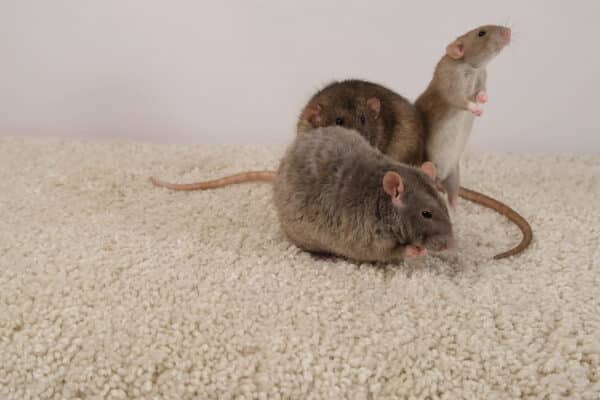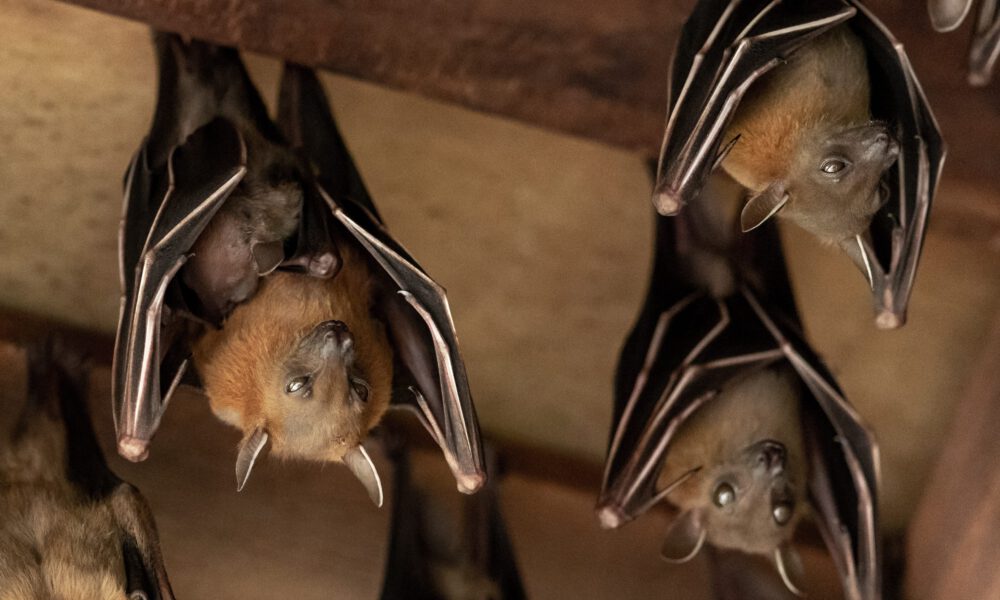
The wildlife specialists in the south expect bats to begin emerging from their winter roosts at the start of spring. However, this year is different. It is a mystery why our southern bats are already up and active starting in early to mid-February. Homeowners and experts didn’t see it coming, knowing that bat season typically falls between April and May or mid-March at the earliest.
We won’t get to the bottom of this odd occurrence in this particular blog—There’s still much research and observation to do. However, we will get familiar with bat season and all it entails. If you’re concerned about the early-arriving bats near your Alabama home, call Covenant Wildlife Removal!
In the meantime, learn all about the Alabama bat population, bat season, and how to handle an infestation.
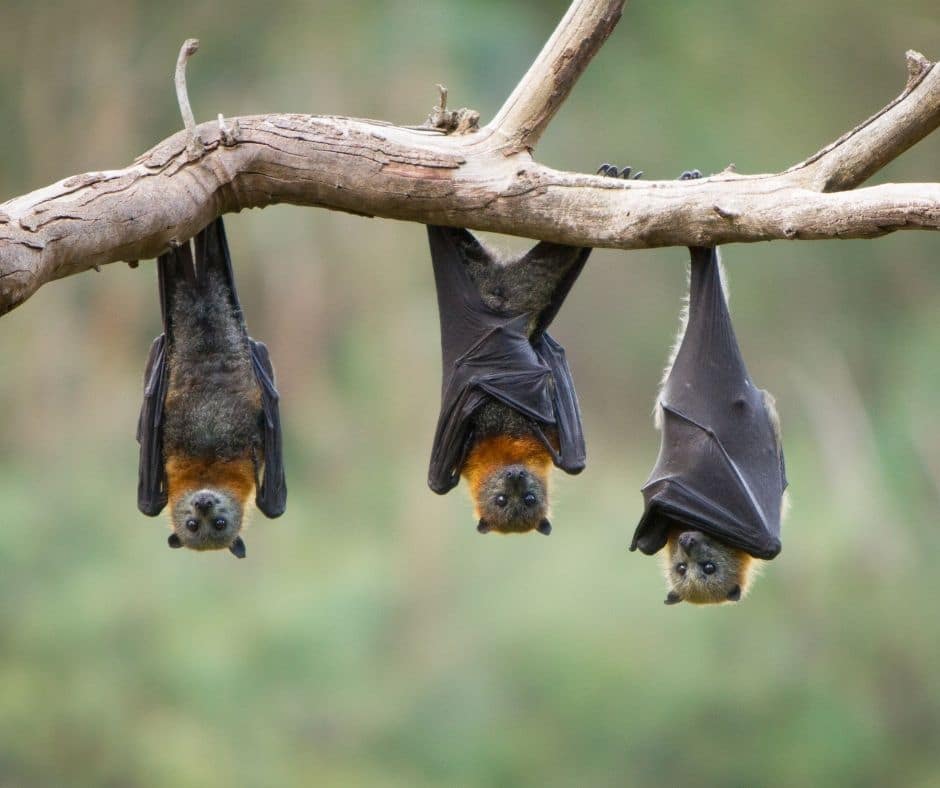
The Common Bats of Alabama
Bats are very diverse mammals, and Alabama is one of the top states with the most biodiversity in the US. Therefore, we can conclude that many bat species call Alabama their home. There are 16 unique bat species in our beautiful state. The following 4 are the bats we most commonly interact with as a wildlife removal team, briefly describing their appearance.
1 | Big Brown Bat
As you may have guessed, big brown bats are relatively large bats. They have large pointed ears, reddish-brown fur on their back, and lighter brown on their belly. The big brown bat’s snout and wings are absent of hair.
In flight, their wingspan reaches nearly 14 inches on average, similar to some hawks’ wingspan.
2 | Little Brown Bat
Little brown bats are some of the more common bat species in Alabama. Despite its name, this bat ranges from golden to reddish to brown and even has the rare albino members of the population. Its fur has a glossy appearance with a lighter body and dark hairless wings and snout.
The little brown bat may also be identified by its relatively small ears and long hairs on its toes. They’re small creatures with an average wingspan of about 10 inches and weigh less than half an ounce.
3 | Mexican Free-tailed Bat
Mexican free-tailed bats are quick flyers of relatively medium size compared to other bat species. They range in color from a reddish hue to gray and dark brown. Their most distinctive characteristics are their wrinkled lips and long and thin wings. While their wingspan reaches around 14 inches, these little guys weigh only half an ounce.
4 | Southeastern Myotis Bat
This furry bat species is unfortunately in decline. But this isn’t uncommon for bats. The leading cause is habitat loss and other human-caused threats, like pesticides. Southeastern myotis bats are easier to identify than other abundant bat species because of their thick, reddish-brown fur coats. Additionally, they have relatively large hind feet and a pink snout. They’re pretty small, weighing around 6 grams with a wingspan of 10 inches.
Bat Season in the South
In the southern states, bats are most active in the spring and summer when food is plentiful and the temperatures are ideal. Come fall and winter, they slow their activity to conserve energy because of the lack of insects to eat and the frigid weather.
During bat season, these fascinating creatures will spend most of their time searching for food, flying back and forth from their nests. Bats are nocturnal mammals, so their waking hours fall between dust and dawn. This is when you may spot bats soaring through the sky during bat season in Alabama.
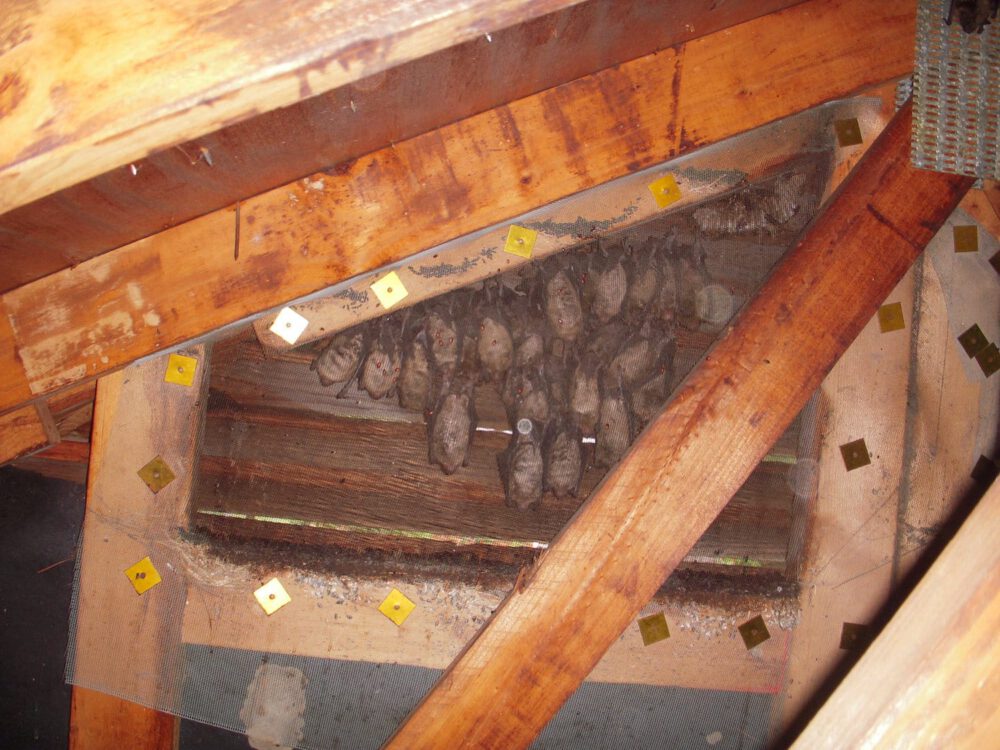
What Do Bats Do for the Fall and Winter?
Before waking as the temperatures warm and flowers bloom, several Alabama bats hibernate, entering a sleep-like state. The bat’s heart rate slows to around 10 beats per minute during this time. This drastically differs from their regular rate of 200 to 300 beats per minute.
They don’t remain in this suspended state for the entire fall and winter seasons. Bats go through cycles of torpor, or inactivity, and more usual awareness. Unfortunately, this isn’t the best for bats because they unnecessarily use the energy they should conserve to survive the harsh winters. Researchers believe the bats are waking due to typical disease colonies that will develop during hibernation called White Nose Syndrome.
There’s a chance a colony of bats will choose to roost in your attic or a similar structure for the autumn and winter. It’s common for caves and other more ideal roosting spots to be scarce, so they often have few options, making your home an attractive choice.
If you didn’t notice the bat infestation in the winter, you would surely realize it by the bat season in spring and summer.
How Does Bat Exclusion Work?
When you discover an infestation of bats in your home, it is crucial you contact your local bat removal company as soon as possible to get a plan on how to safely remove them from your property. Bats are protected in many states, including Alabama, meaning there are laws and regulations to follow when handling these precious creatures. Nevertheless, it’s essential to get them out of your home because of the health and safety threats they bring along with them:
- Bats can spread ill-causing diseases to humans and their pets.
- Many carry parasites, like fleas, ticks, and mites.
- Roosting bats will cause damage to your home over time.
The most humane and effective method of bat removal is called bat exclusion. This is a long-term solution to prevent and remove bats from your home, causing no harm to the colony. During the process, there are several steps, including installing specialized exclusionary devices at the entryways.
While the professionals certainly know what they are doing, bat exclusion can be tricky. Particular times of the year, such as bat season, come with unique rules and regulations on what you can and cannot do regarding bat prevention and removal.
At the earliest, mid-August is when young bats are ready to leave the roost to live independent lives. This is when pest specialists can legally implement prevention and removal methods. Otherwise, the baby bats may become trapped in the structure, killing hundreds of the already declining population. By fall and winter, it is safe and legal for professionals to take action with bat problems. However, during the height of bat season, any intervention is off-limits.
Contact Covenant Wildlife to Remove Bats Safely and Completely
If you’ve been hearing strange sounds coming from your attic in the evening and early morning, there’s a chance you have bats nesting in your home. While the sounds could be coming from numerous other common pests, it is vital to address the situation as soon as possible when there is a chance it could be protected and vulnerable bats.
Covenant Wildlife Removal is proud to offer the safest and most effective bat exclusion in Birmingham, Alabama, and surrounding areas. We are experts at bat control and know the ins and outs of the laws protecting these precious creatures.
Reach out to Covenant Wildlife today, so we can immediately work on a plan to humanely remove the bats roosting in your attic.

